Growing Tropical Fruit Trees in Zone 9b
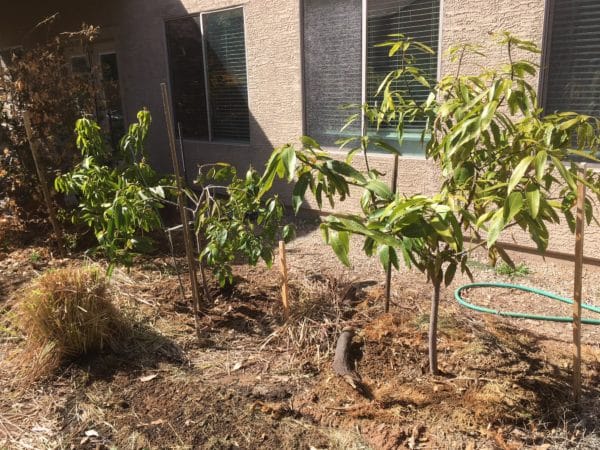
I’ve been growing various subtropical fruit trees in the Phoenix, Arizona desert for several years. With some extra care it’s quite possible to grow several different types of subtropical fruit trees in zone 9b. It isn’t always easy and set-backs are to be expected. Occasionally, we’re hit with one of those winters that remind us why our city isn’t overrun by Mango trees. The winter of 2018-19 has been one of those challenging times for fringe growers in our area.
What am I growing?
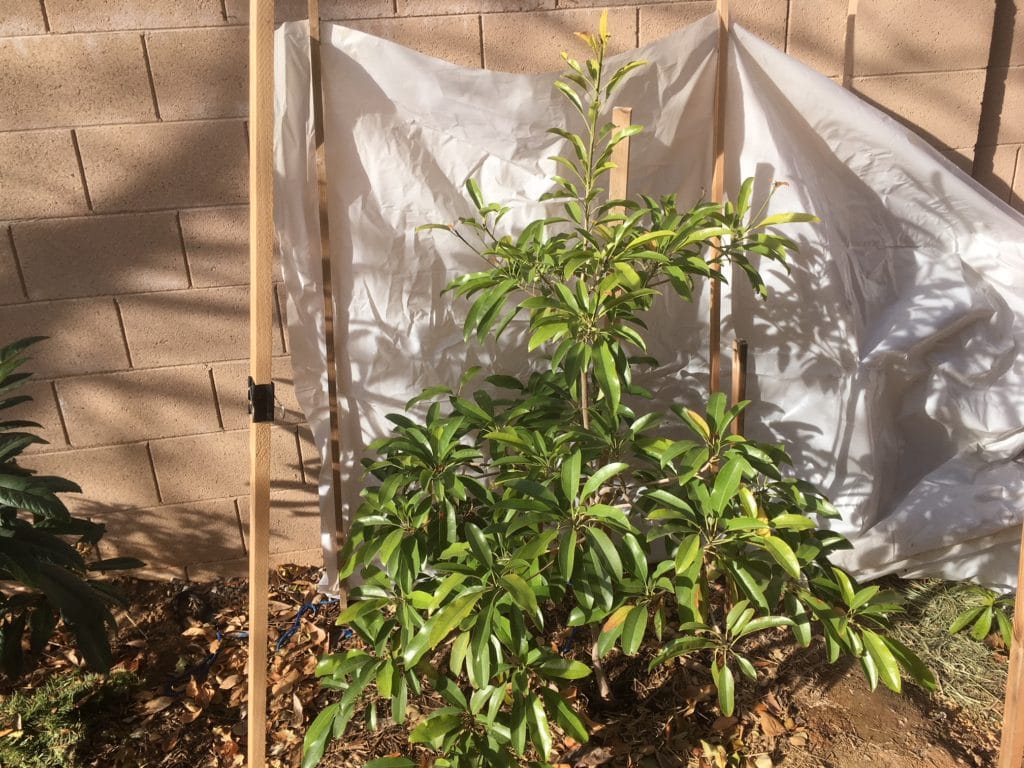
First off, let’s talk about what I’m growing or have grown in the past with success. I’m currently growing around 30 different fruit trees or fruiting plants/shrubs. For the sake of this post we will focus on tropical or subtropical fruit trees that are considered marginal for zone 9b. I’ve noted a few of these that can survive brief exposure down to the mid-20’s without cold protection and if damaged will recover. Click on any of the highlighted fruit trees for complete care guides.
- Papaya
- Loquat (No need to protect in Zone 9b)
- White Sapote (No need to protect in Zone 9b)
- Barbados Cherry
- Mango
- Soursop
- Sugar Apple
- Canistel (Be cautious, but my seedlings did survive without protection)
- Jaboticaba (No need to protect Zone 9b)
- Atemoya
- Tropical Guava’s (Larger trees will recover if unprotected)
- Citrus (No need to protect Zone 9b)
- Sapodilla
- Jamaican Cherry
- Indian Jujube
Winter in the Desert
Our zone 9b presents many different challenges from other regions of the world with the same zone. First off, it’s a desert, so we get extremely hot with temps that can soar up to around 120 degrees Fahrenheit and temps consistently in the triple digits. With our lack of humidity, that poses other challenges with growing fruit trees that are more native to humid conditions. It’s not uncommon for temps to fluctuate 30-40 degrees from daytime highs to nighttime lows. Since we usually have very little cloud cover and humidity to keep the temps more consistent.
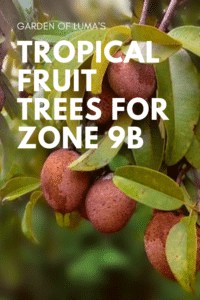
What did I do or not do to protect them?
Our desert winters tend to produce some occasional temps around freezing or slightly below. Generally this only happens a handful of nights, but some winters can be a bit harsher. Several of my more tropical fruit trees are grown in containers. This allows me the ability to move them in the garage or house if I need too. I recommend checking out my in-depth post: Growing Fruit Trees in Containers in Hot Climates.
I also have a few tropical planted in the ground that need some sort of protection during a freeze. The fruit trees that I have in the ground are three Mango trees, papaya, two tropical guava trees, an Atemoya, and Sapodilla. Just to note, I had a young Barbados cherry tree that was left unprotected and killed in a frost the previous year, but had a larger tree at my previous resident that did fine. I’m also growing one in a container that is doing great. I didn’t utilize any sort of frost protection on my Papaya or Guava’s.
How I protected
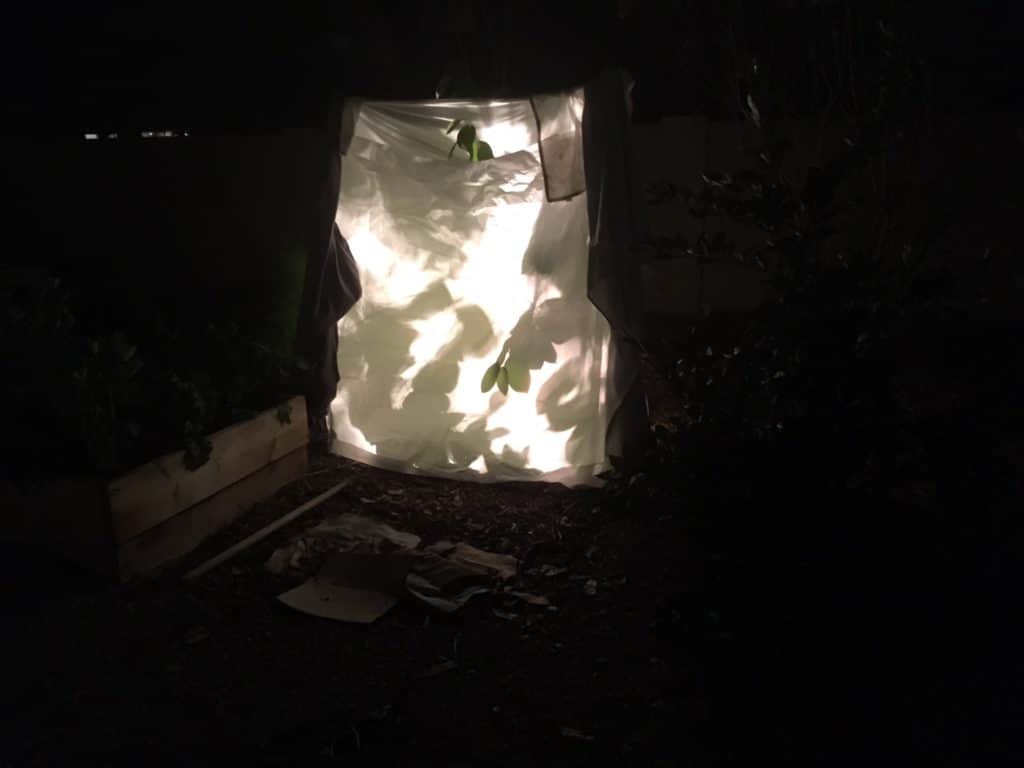
The in-ground Mangoes, Sapodilla, and Atemoya were all protected by using a frost structure. I simply used four wooden stakes that were around 8ft tall around the tree to create a square. I enclosed the structure with 6mil painter’s plastic, being careful not to allow the plastic to touch any of the foliage. At night I would drape a sheet over the top and remove during the day to allow for air flow. On nights were the forecast was below 35 degrees Fahrenheit I would utilize a heat lamp or small heater. My post: How to Protect Tropical Fruit Trees from Cold, goes further into how helping tropical fruit trees through the winter.
The Aftermath
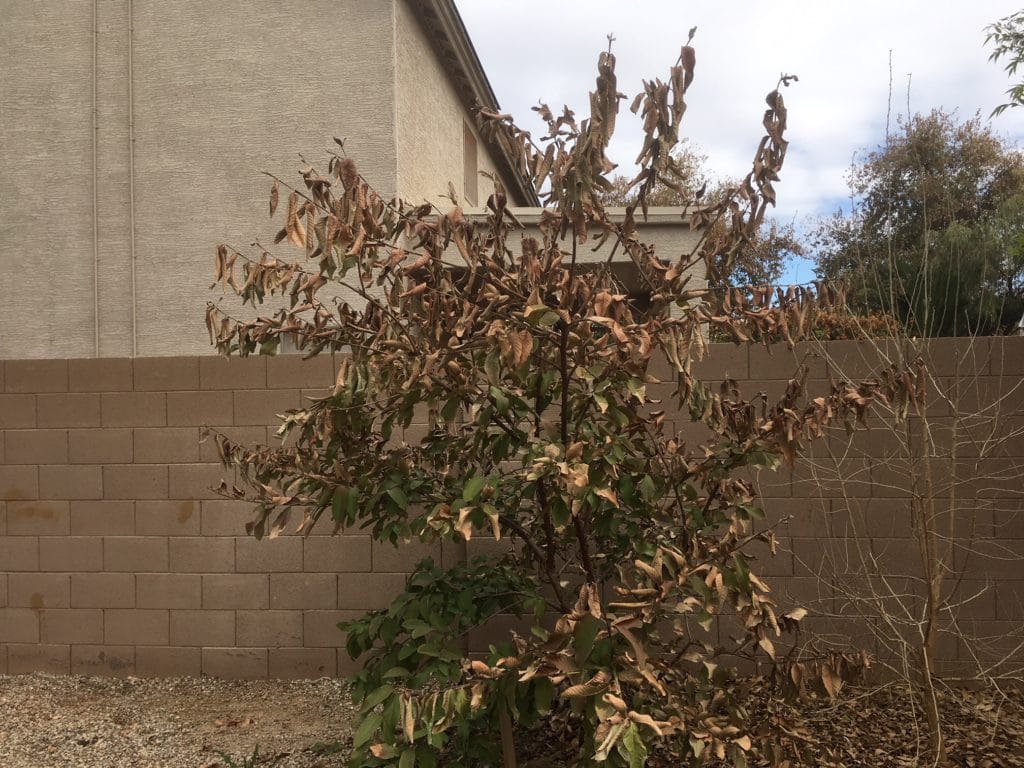
To give you an idea of how the winter of 2018-19 stacked up to some recent winters or averages for my area. According to getchill.net, which shows how many chill hours or hours below 45 degrees Fahrenheit recorded in your area, I accumulated 713 hours in 2018-19. The previous year was a reported 361 which is more in line with our averages around 400-450. Here are the typical average winter temps for my area:
| Dec | Jan | Feb | |
| Average high in °F | 63 | 65 | 69 |
| Average low in °F | 39 | 40 | 43 |
| Av. precipitation in in | 1.18 | 0.98 | 1.18 |
Winter of 2018-19 I counted 59 recorded temps below 40 degrees Fahrenheit with 20 of those into the 20’s. To top it off we dealt with a high amount of rain, which turned into hail one day. Cold and wet can be a detrimental combination for tropical fruit trees. Here is a video showing the flood in my backyard:
During those couple nights of rain, I was unable to frost protect due to all the water, so my trees went unprotected for a few days at a low of around 30 degrees Fahrenheit. With all these extreme conditions, all of my trees survived and in March 2019 started showing signs of new growth. The guavas took a hit and most of the leaves were damaged, including some of the newer growth tips. My Papaya tree had a mushy spot in the trunk, but did show signs of new growth. I ended up pulling the tree anyway.
Don’t Panic
Freeze warnings and the havoc it can wreak can cause all out panic, trust me I’ve been there. If some frost damage occurs, don’t worry, and hold off on pruning until all threats of frost have ended for the season. Even though it isn’t pretty seeing some dead branches or leaves, it’s going to benefit the tree to keep the pruning sheers away until spring. The damaged foliage can provide some added frost protection. After threats of frost have subsided, use your fingernail to scratch the bark and branches. Green under the bark indicates life and you will soon see new growth emerging as the temps start warming up.
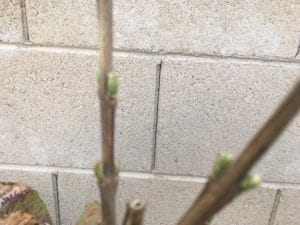
In summary, growing tropical fruit trees outside of the tropics or in marginal climates like zone 9b is doable. It may take some extra care or protective measures, but if you’re willing to put in the time and effort, you can have success growing these types of trees, even in zone 9b.
Please comment below on your experiences growing tropical fruit trees in zone 9b.
